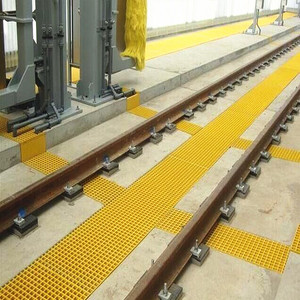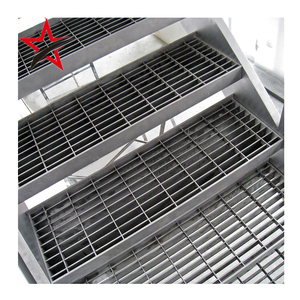(2764 products available)







































































































































































































A grating and frame is a structure that consists of bars arranged parallel to each other. It is also known as a grid or gridwork. A grating is used to cover holes or openings in floors, roads, or other surfaces. It allows light, air, and water to pass through while providing support and safety underfoot. Different types of gratings are categorized based on application, material, and manufacturing process. They include the following:
Drain Grates
These frames and gratings are used to cover and protect stormwater or drainage. They are available in different shapes, including round, square, and rectangular. They are also made from various materials, such as plastic, metal, or concrete. Drain grates enhance the aesthetic appearance of an area while providing safety and structural integrity.
Decorative Grates
These types of frames and gratings are used for drainage applications in landscapes, yards, driveways, and gardens. They come in various styles and patterns to complement surroundings and areas. Decorative grates are made from different materials, such as brass, stainless steel, cast iron, and polymer.
Trench Grates
These are heavy-duty frames and gratings used in commercial and industrial applications. They are manufactured from various materials, such as aluminum, cast iron, ductile iron, or stainless steel. Trench grates are cost-effective and easy to install. They provide excellent drainage solutions in high traffic areas.
Bar Grates
These types of gratings are made from steel, aluminum, or fiberglass. They are used to provide ventilation and drainage in industrial and commercial settings. Bar grates are slip-resistant and durable. They are also lightweight and strong. These gratings are versatile and widely used due to their structural integrity.
Heavy Duty Grates
These are specially reinforced frames and gratings designed to support heavy loads. They are used in high traffic areas, such as pedestrian walkways, driveways, and parking lots. These grates are manufactured with ductile iron, cast iron, or steel. They feature load-bearing capabilities and are resistant to impact and wear.
Composite Grates
These types of frames and gratings are made from a combination of materials, including plastic and fiberglass. They offer an alternative to traditional metal grates. Composite grates are lightweight and corrosion-resistant. They are also easy to install and maintain. These grates provide aesthetic appeal and excellent drainage.
There are many differences between types of drainage covers and frames. From material to shape and size, everything differs. But the basic features remain the same. Here is a quick overview of the features and functions of the grates and frames.
The applications of grating frames and covers are numerous across different industries and sectors. Here are some of them:
Industrial Plants
Factories and industrial plants often use gratings for walkways, platforms, and areas around machinery. The frames and covers help in the management of fluids and the prevention of hazards. They also allow for the easy and quick passage of liquids and gases.
Construction Projects
Grates are an important component in a lot of construction and building projects. They are used in the construction of parking lots, pedestrian walkways, and driveways. Grates are also used in the construction of bridges and infrastructure projects. They provide structural support and strength while allowing for drainage.
Agricultural Settings
Frames and grating are applicable in many agricultural settings. They are used in the construction of animal shelters and barns. The grating allows for the easy passage of waste while providing a strong flooring system for animals. Grating is also used in the construction of drainage systems in farms and agricultural areas.
Waste Treatment Facilities
All kinds of waste treatment and water treatment facilities use gratings and frames extensively. The grating allows for the effective management and treatment of waste. It also facilitates the easy and effective flow of water and waste through the treatment systems.
Marine Applications
Grating is used in many marine applications, including boats, ships, and oil rigs. The frames and covers provide traction and anti-slip surfaces in areas that are often wet and exposed to water. They are also used in offshore oil rigs.
Public Areas
Frames and grating are used in many public areas like parks and recreational areas. They are often used to cover drainage areas and manage rainwater in an effective way. They are also popular for use in urban settings, allowing for the easy flow of water in drainage areas.
When choosing the right frame and grate for different needs, it is essential to consider various factors. This ensures that the right choice is made. These factors include:
Application
The application of the grate influences the choice. For example, heavy-duty applications require a load-bearing frame and grate. This application can be in high-traffic areas or construction projects. On the other hand, light-duty applications need lightweight and aesthetically pleasing grates. These applications include residential landscapes.
Material
The environment where the grate and frame will be installed affects their material choice. In coastal areas, materials that resist corrosion are needed. Such materials include plastic or fiberglass. In contrast, stainless steel or aluminum works well in different environments.
Type of Frame
The type of frame affects the durability and stability of the construction. Considerations like slip resistance, load capacity, and drainage efficiency influence the selection of a certain type of frame. There are welded, bolted, and cast in frame types, and each has its advantages.
Drainage
The design of the grate should consider the type of drainage system in place. This is because different drainage systems require various grate designs. For instance, linear drainage requires a specific design of a linear grate, while traditional drainage works well with a framed and grating configuration.
Safety
Safety should be a priority when considering framed construction. Slip-resistant designs should be considered to prevent accidents. Load-bearing frames and grates capable of withstanding pressure without warping or bending protect pedestrians and vehicles.
Maintenance
The ease of maintenance affects the longevity of the grate and frame. Choosing frames and grates that are easy to clean and resistant to damage is essential. This is because, over time, constant cleaning and maintenance can deteriorate the frame or grate.
Aesthetics
The aesthetics of the grate and frame are vital in architectural designs. Different finishes and patterns complement the surrounding design. It is essential to consider the visibility of the grate and frame. This ensures that they blend well with the environment or interior design.
Q: What is a grid and frame?
A: A grid is a type of metal piece that is used to cover holes in places like roads, sidewalks, and driveways. It supports the weight of cars and people walking. A frame is a structure around the grid that helps hold it in place when it is installed.
Q: What is the use of grid and frame in home improvement?
A: The grid helps cover drainage holes in construction sites and other areas. It allows water to go through while blocking dirt and debris. The grid and frame also help cover utility access points in the ground.
Q: What are the different types of grids?
A: There are many types of grids. Load-bearing grids are used for sidewalks and driveways. Trench grids cover drains and trenches. Decorative grids are for looks, while steel and stainless steel grids are made of durable metal. Plastic grids are lighter and rust-proof.
Q: How to choose a grid?
A: Consider the amount of traffic it will get. Heavier traffic means a stronger grid is needed. Think about the location - will it be outside in the rain or sun? Different materials work better for different conditions. What is your budget? There are grids at many price points.
Q: What are the materials used to make a grid?
A: Grids are made from many materials. Steel and stainless steel are very strong, especially for heavy-duty uses. Aluminum is lightweight and won't rust. Plastic and polymer grids also do not rust and are easy to move. They come in different materials for different needs.